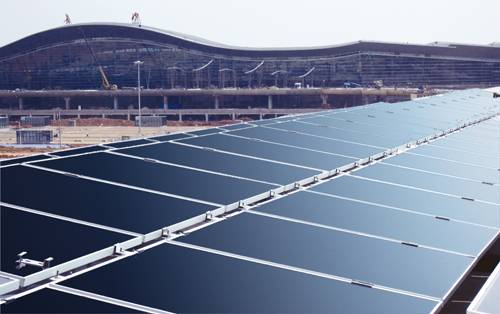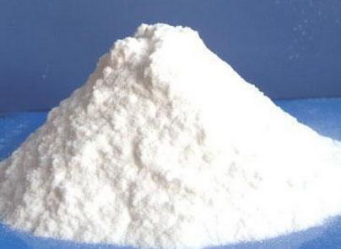 According to a recent study released by the Ministry of Industry and Information Technology, although the newly installed capacity of domestic photovoltaic power generation reached 2.8 GW in the first half of the year, the proportion of distributed generation was zero. The analysis pointed out that distributed photovoltaic power generation may still be in an embarrassing situation of “policy thunder and market rain is small†in the short term.
According to a recent study released by the Ministry of Industry and Information Technology, although the newly installed capacity of domestic photovoltaic power generation reached 2.8 GW in the first half of the year, the proportion of distributed generation was zero. The analysis pointed out that distributed photovoltaic power generation may still be in an embarrassing situation of “policy thunder and market rain is small†in the short term. Installed in the first half of the year
According to the “Photovoltaic Industry Operation Situation in China in the First Half of 2013†​​issued by the Ministry of Industry and Information Technology on August 14, the total installed capacity of photovoltaic power generation in the first half of the year was 2.8GW, of which 1.5GW came from the second batch of Golden Sun and photovoltaic construction projects last year. 1.3GW is a large-scale photovoltaic power station. This means that in the first half of the domestic PV power plant construction, the share of distributed photovoltaic power generation (formally named as a distributed photovoltaic power generation demonstration area by the National Energy Administration as a carrier) is zero.
However, in the 35 GW installation target set out in the “12th Five-Year Plan for Solar Power Generation,†distributed PV installations are required to account for half of the total. The National Energy Administration and the National Development and Reform Commission issued the “Notice on Application of Distributed Photovoltaic Generation Scale Application Demonstration Area†and “Interim Measures on Distributed Generation Management†in September last year and August this year, aiming at the future of distributed photovoltaic power generation to “2015 The target of installing 15GW in 31 provinces, municipalities, and autonomous regions put forward a multi-faceted policy framework including grid matching and fiscal incentives. However, to this day, the key factors that determine the steady start-up of distributed photovoltaic power generation in the country - the policy of electricity price subsidy and taxation have not yet been introduced. According to the consensus of industry experts and brokerage analysts, this may be the largest cause of distributed power generation in the country with "great thunder and small rain."
A securities company representative of a large-scale photovoltaic company told a China Securities Journal reporter that despite favorable policies and policies, they still did not understand how China's distributed photovoltaic power generation must develop, due to uncertainty in the amount of electricity price subsidies and project construction involved. The related preferential policies for land and taxation have not been adjusted. The company has always had no clear expectation of return on investment for the construction of distributed photovoltaic power generation projects.
China Photovoltaic Industry Association predicts that in the new installation of 8GW of photovoltaic power generation this year, the distributed power generation demonstration area will be only 1GW.
Large-scale power stations still dominate the mainstream
In the first half of the domestic 2.8GW installed capacity of photovoltaic installations, the installed capacity of large-scale photovoltaic power plants reached 1.3GW, accounting for almost half of the total. According to many market analysts, large-scale ground power stations will be the main body of photovoltaic power generation for a certain period of time because of financial subsidies and favorable conditions for grid connection.
According to the China Securities Journal, according to rough statistics, as of now, at least dozens of photovoltaic companies in A shares have gradually joined the army of downstream power station development. In the past month of July, several companies, including Hairun Photovoltaic, Aiken Technology, and Aerospace Machinery and Electronics, have signed EPC orders for photovoltaic power stations and developed photovoltaic power plants. It is worth mentioning that the power plant projects built by these companies are all large-scale ground power station projects, and the internal rate of return on investments for these power plant projects over a 20-year life cycle can reach 10%.
"To start substantively the domestic distributed photovoltaic power generation market, the most important thing is to issue two major policy rules based on the already-issued policy framework: First, the power subsidies policy, and second, the distribution network construction plan." The person said.
Carboxymethyl Cellulose is a carboxymethyl group substituted by cellulose. According to its molecular weight or substitution, it can be completely dissolved or insoluble polymeric, which can be used as a weak acid type cation exchanger to separate neutral or alkaline proteins. Can form high viscosity carboxymethyl cellulose of colloid, solution, adhesion, thickening, flow, emulsifying dispersion, informs, water retention, protective colloid, film forming, acid, salt, clouding resistance and other properties, and physical harm, so in food, medicine, daily chemical, oil, paper making, textile, construction and other fields is widely used in production.
Carboxymethyl cellulose for non-toxic tasteless white flocculent powder, stable performance, easy to dissolve in water, its aqueous solution is neutral or alkaline transparent viscous liquid, soluble in water soluble glue and other resin, insoluble in ethanol and other organic solvents. CMC can be used as binder, thickener, suspension, emulsifier, dispersant, stabilizer, sizing agent, etc.

Carboxymethyl Cellulose
Carboxymethyl Cellulose Cmc,Carboxymethyl Cellulose,High Viscosity Cmc,Ceramic Grade Carboxymethyl Cellulose
Hebei pancan trading co. LTD , http://www.hbpancanshangmao.com